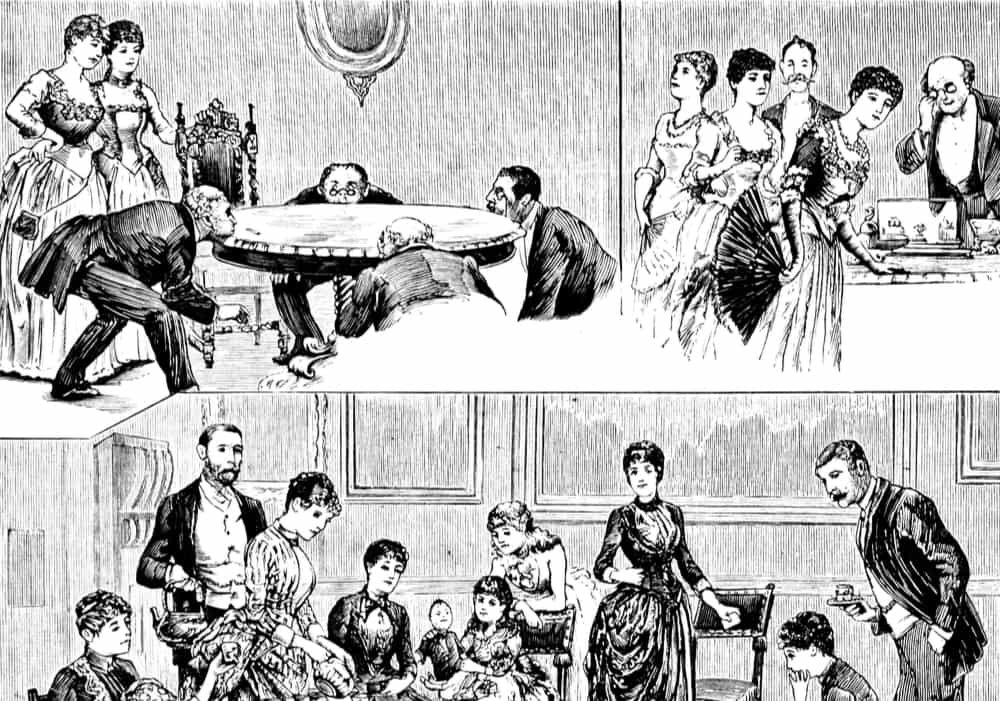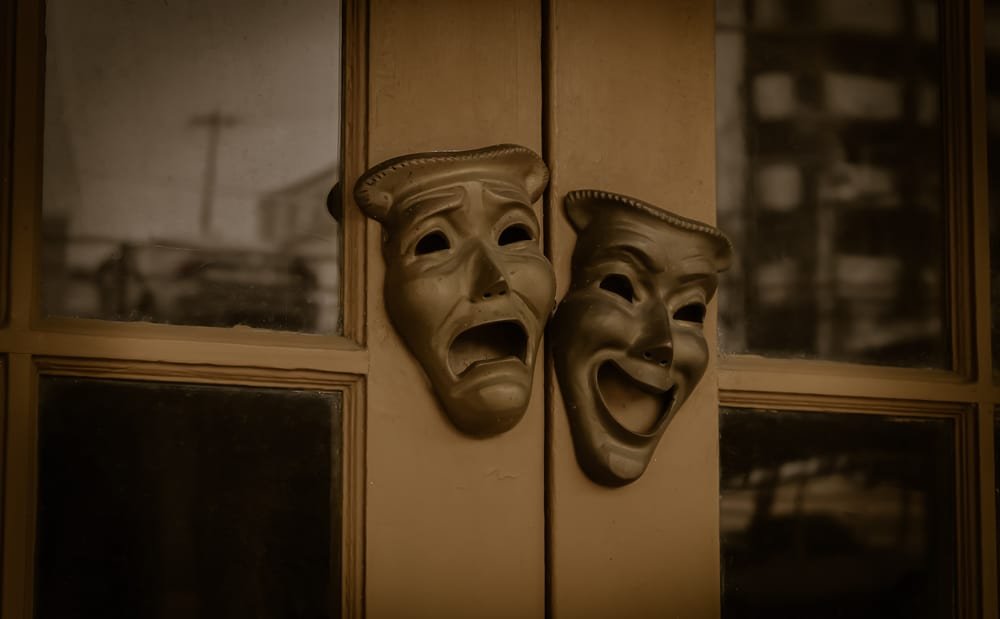Last Updated on January 7, 2024 by Gamesver Team and JC Franco

When I have a gathering of family and friends and the games are hauled out, I often hear the same three games enthusiastically shrieked for: Charades, Taboo, and Heads Up!. While I struggle to choose between the three (they all seem so similar to me), I thought it would be nice for novice players to have a bit more background on the differences between each. It certainly makes choosing the right game for the afternoon/evening a whole lot easier!
Charades vs. Heads Up! vs. Taboo
| CHARADES | HEADS UP! | TABOO | |
| HISTORY & ORIGIN | France – 18th Century | Ellen DeGeneres – 2013 | Brian Hersch – 1989 |
| GAMEPLAY (verbal vs. non-verbal) | A player stands up in front and give only physical clues (non-verbally) to his/her team to guess the word or phrase. No talking is allowed. | A player holds a card or a device against his/her forehead and has to guess the word or phrase with the clues provided by the rest. Talking is allowed. | A player provides clues to the team so that they can guess the word or phrase. Talking is allowed, but certain words (considered Taboo) cannot be said. |
| EQUIPMENT USED (traditional boards and cards vs. digital devices) | Homemade “cards”, Charades game pack, mobile phone, or tablet. | Homemade “cards”, mobile phone, or tablet. | Taboo game pack (with Buzzer). |
| FOCUS OF THE GAME (who guesses and who gives clues). | One person from each team must present the non-verbal clues to the team. | One person is singled out to guess what the word or phrase (he/she is holding) is, based on clues given by the others. | The team must guess the word or phrase based on clues provided by just one of the teammates. |
While the history and origin of each of these games do not strictly determine the actual differences between them, it still provides a bit of insight into how and why the games differ. If you want to delve a little more into the differences between Charades, Taboo, and Heads Up!, read on. Below, I provide a bit more insight into each of the different categories mentioned above.
History & Origin

The history of Charades, Taboo, and Heads Up are all quite different, even though the games have similar elements. It is quite important to understand the background of a game before playing it as it might help you to understand why the rules and gameplay are the way they are.
Heads Up!
Take, for instance, that Heads Up is a more modern game created by talk show host, Ellen DeGeneres. The game launched in 2013 when Ellen played the game on her popular talk show.
The Ellen DeGeneres show has many millions of viewers per episode, so it is safe to say that the game received immediate worldwide exposure. Of course, it was a hit as it provided much hilarity. Everyone wanted to participate in the game and have the same amount of fun at their own parties and gatherings – and thus, the official game of Heads Up! was born. Within just 6 months, the game had shot to the most downloaded apps in the App Store, with over 650,000 downloads in the first month of its release.
Charades
Charades has a much deeper history than Heads Up and has been around for far longer. It has its origins in France in the 18th Century, where it was played as a parlor riddle game. It was only in the second half of the 18th Century that the game became “acted Charades”, which no longer included riddles. Soon the popularity of Charades spread to England and the United States.
Taboo
Taboo is a game that was released in 1989. The inventor of the game is said to be Brian Hersch, co-owner of Hersch Games. The game was published by Parker Brothers, and later it became part of the Hasbro compilation of board games. To be honest, I was surprised to find very little information on the actual history of this game.
The Difference in Game Play

People often want to know how a game is played before they can decide if it is for them or not. Some people feel uncomfortable when all of the attention is on them, while others love to be in the limelight. If you do not know how Charades, Taboo, and Heads Up! are played, you are about to find out. How each of these games is played is actually quite different, although they share a common concept: a word or phrase has to be guessed. Let’s take a look at how each of the game plays of each game differs…
Charades
In Charades, two teams are formed out of the group of players. One player is selected to stand up front and give physical clues as to what word or phrase is on their selected Charades card. Each team member must take a turn before repeating a turn. The player is not allowed to show other players the card and must provide all clues non-verbally.
Heads Up!
In Heads Up!, the gameplay is slightly different in that one player is selected to hold a card or a device (with a word or phrase on it) against his/her forehead. The rest of the team then has to provide the selected player with clues so that he/she can guess what the word or phrase is. This game allows talking.
Taboo
A player provides clues to the team so that they can guess the word or phrase. Talking is allowed, but certain words (considered Taboo) cannot be said.
Taboo works similarly to Charades in that one player is selected to provide clues to the team so that they can guess what the word or phrase on the game card is. How the game differs from Charades is that there are several words (including the actual card word or phrase) that are considered “taboo” and cannot be used to help with giving clues. Much like Heads Up (and unlike Charades), verbal clues are used.
Equipment Used

How you play a game really comes down to what pieces of equipment are included in the game pack. Different pieces of equipment are used to play each of these games.
Charades
In Charades, players can make their own homemade “cards” with word and phrase recommendations on slips of paper, or they can invest in an official Charades game pack that includes cards. The number of cards included in each game pack will depend on the type of Charades you buy. A traditional family Charades game pack includes hundreds of mimes spread across the following (or similar) categories: famous people, TV shows, films, books, popular songs, and “pot luck”.
Taboo
Now for a look at what equipment is used to play Taboo. Taboo is played with two teams, much like Charades, but thereafter it is different. The game requires a Taboo game pack, which includes a 502-card deck that is unique to Taboo. The cards each feature a set of Taboo words that cannot be used while presenting clues to other players. The game requires a buzzer (included in the game pack) and two AA batteries too.
Heads Up!
What is used to play Heads Up!? When it comes to Heads Up!, there is no real need for physical equipment even though the very first version played on Ellen DeGeneres’ show used actual game cards. When the game officially launched in 2013, it was in digital format and is available for download from the App Store.
All a group of people needs to play the game is a mobile phone (fully charged, of course) and a downloaded copy of the game. That is it. You can download the game from your mobile phone’s App store. Regardless of what mobile phone you have, as long as it is a smartphone, there is probably a version of Heads Up! available for you.
Focus of the Game
Who gives clues and who guesses at the answers differs from one game to the next.
Charades

In a game of Charades, two teams are formed. One person from each team must present the non-verbal clues to the team. It is the team that guesses the word or phrase.
Heads Up!
The focus of the game in Heads Up! is quite different. In Heads Up!, things are quite different in that one teammate is singled out to guess what the word or phrase is, based on clues given by the rest of the team. This is like Charades in reverse.
Taboo
What is the focus in Taboo? The main focus of Taboo is different from Heads Up! in that it is the rest of the team that must guess the word or phrase based on clues provided by just one of the teammates.
Different But the Same: Charades vs. Taboo vs. Heads Up!
It must be noted that while these three games have very definite and obvious differences, they are also all quite similar in that they are based on the same concept. Word guessing games are certainly a party pleaser – well, in my home they are! Charades, Taboo, and Heads Up! are all word games that require presenting clues and subsequent guessing of words and phrases. Because of this, I find all three of these games wildly engaging and entertaining, but I must admit that Charades is still my favorite.
Last Word
When it comes to comparing Charades, Taboo, and Heads Up!; there are no major differences. All three games are enjoyed by groups divided into teams and can be thoroughly enjoyed by all age groups. You will also find that each of these games is available in different variations to appeal to different interests, age groups, and gathering types.
In my opinion, whether you are playing Charades, Taboo, or Heads Up! at your next social event or family gathering, you simply cannot go wrong.

